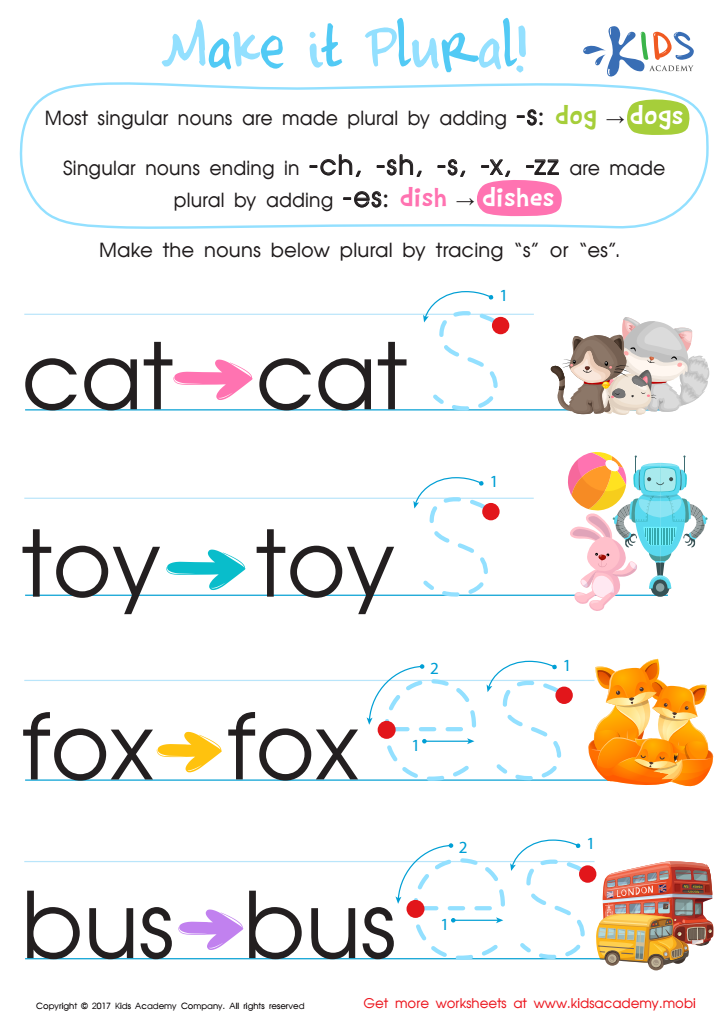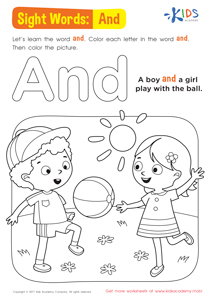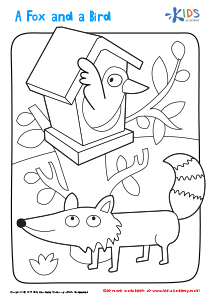Easy Tracing Letters worksheets activities for Ages 5-6
1 filtered results
-
From - To


Make it Plural Worksheet
Easy Tracing Letters worksheets activities stand out as an exceptionally useful tool in the early stages of a child's educational journey. These engaging activities are not just fun but also instrumental in laying a strong foundation for literacy. Let’s delve into why these simple yet effective worksheets are indispensable for young learners.
Firstly, Easy Tracing Letters worksheets activities serve as a hands-on approach to learning the alphabet. By tracing the letters, children become familiar with their shapes and the distinctions between them. This familiarity is crucial for the development of reading and writing skills. The repetitive motion of tracing each letter helps in memorizing the alphabet, which is the first step towards literacy.
Moreover, these tracing activities are designed to enhance fine motor skills. As children guide their pencil from one point to another, following the outline of each letter, they develop control over their hand movements. This improvement in fine motor skills is vital not only for writing but also for other daily activities that require hand-eye coordination.
The simplicity and accessibility of Easy Tracing Letters worksheets make them a go-to resource for parents and educators. They require minimal preparation and can be used anywhere, making them an ideal educational tool for both classroom settings and home learning environments. This accessibility ensures that children can consistently practice without needing complex materials or preparation.
Furthermore, these activities instill a sense of achievement in children. Completing a worksheet provides them with immediate feedback, boosting their confidence and motivating them to engage further with the learning material. This positive reinforcement is key to fostering a love for learning from an early age.
In conclusion, Easy Tracing Letters worksheets activities are an invaluable resource for young learners. They not only promote literacy and fine motor skills development but also offer an accessible and enjoyable way for children to embark on their educational journey. Through these simple tracing exercises, children gain the foundational skills necessary for academic success and a lifelong love for learning.
 Assign to the classroom
Assign to the classroom




.jpg)







